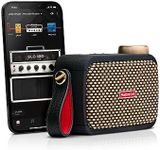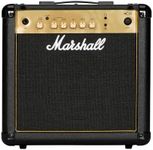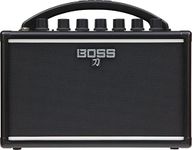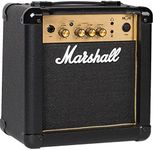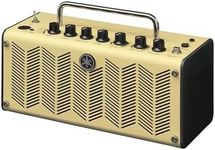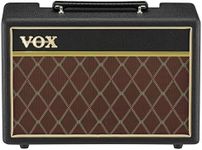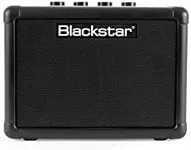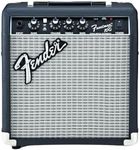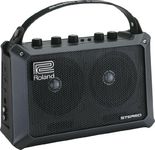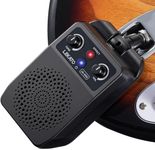Buying Guide for the Best Mini Guitar Amps
Choosing the right mini guitar amp can significantly enhance your playing experience, whether you're practicing at home, jamming with friends, or performing in small venues. Mini guitar amps are compact, portable, and often come with a variety of features that can cater to different playing styles and needs. To make an informed decision, it's important to understand the key specifications and how they align with your personal requirements.Power OutputPower output, measured in watts, determines the volume and headroom of the amp. For home practice, a lower wattage (1-10 watts) is usually sufficient and allows you to achieve good sound at lower volumes. For small gigs or jam sessions, you might want something in the range of 10-20 watts. Higher wattage amps (20+ watts) can handle larger spaces but may sacrifice portability. Consider where you'll be using the amp most frequently to decide the appropriate power output.
Speaker SizeThe size of the speaker, typically measured in inches, affects the tonal quality and projection of the sound. Smaller speakers (3-5 inches) are great for portability and practice, offering a focused sound. Medium-sized speakers (6-8 inches) provide a balance between portability and fuller sound, suitable for small performances. Larger speakers (10+ inches) deliver richer tones and better projection but are less portable. Think about your need for sound quality versus portability when choosing the speaker size.
Built-in EffectsMany mini guitar amps come with built-in effects like reverb, delay, and distortion. These effects can enhance your sound and provide more versatility in your playing. If you enjoy experimenting with different sounds or don't want to carry additional pedals, look for an amp with a variety of built-in effects. If you prefer a clean sound or already have external effects pedals, you might not need as many built-in effects.
PortabilityPortability is a key feature of mini guitar amps. Consider the weight and size of the amp, as well as whether it has a handle or strap for easy carrying. If you plan to move the amp frequently, a lighter and more compact model will be more convenient. For stationary use, portability might be less of a concern, allowing you to focus more on other features.
Battery vs. AC PowerMini guitar amps can be powered by batteries or AC power. Battery-powered amps offer greater mobility and are ideal for outdoor use or situations where an outlet isn't available. However, they may have limited playtime before needing a recharge. AC-powered amps provide consistent power and are better for extended use but require access to an electrical outlet. Consider where and how long you'll be using the amp to decide which power option is best for you.
Connectivity OptionsConnectivity options like headphone jacks, auxiliary inputs, and USB ports can add versatility to your amp. Headphone jacks allow for silent practice, while auxiliary inputs let you play along with backing tracks. USB ports can be useful for recording or connecting to digital devices. Think about how you plan to use the amp and which connectivity options will enhance your experience.
